WEBXway
We are pleased to present the look and some of the features of the new version of the WEBXway location system that have already been implemented. All service components are manufactured and delivered exclusively by Inventia. So far, the basic tool was the XwayMap application designed for monitoring, viewing and analyzing data. Last year, we decided to transfer the application and the system architecture completely to the internet platform.
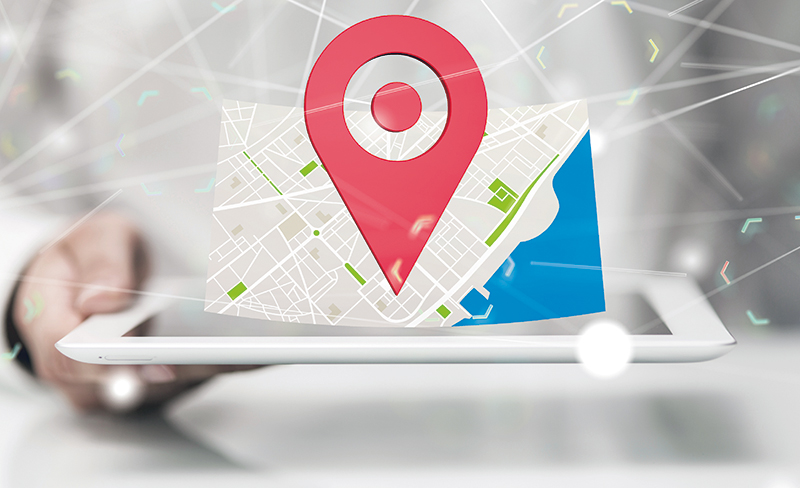
WEBXway is transparent and easy to use application consisting of several functional modules:
- Map – using the OpenStreetMaps maps – with the central map area for showing the track/tracks of vehicles and function panels on the left and right side of the screen. The area of the chart its located at the bottom, giving a unique opportunity to present on the graph many signals, both analog and digital.
- Reports – they are delivered in three formats: xls, PDF, and preview.
- Notifications and user events generation – this is another unique solution that allows the user to check the required coincidences between signals and events generated by telemetry terminals.
- Reading of tachographs and driver cards.
The last two modules are currently being tested by the development team.
On the occasion of modernization, we have designed some elements from scratch. The appearance and interface graphics changed the most. Users will have to get used to a new, readable way of navigation, referring to the options from the locally installed application. Initial tests seem promising, and we hope that the new architecture will be well received. The external appearance is not everything. Changes go deeper. We will skip the technical details because of their confidentiality. The main change is the use of a completely new database engine designed to collect measurement data often sent in large portions. In parallel, it is a new architecture that shares registered data as quickly as it acquires. As in the previous version, we also provide users with the ability to manage their objects from the browser.
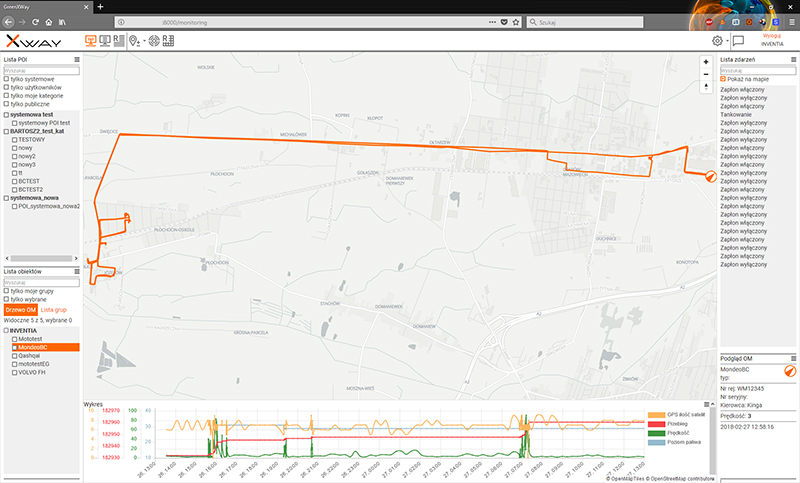
Completely new graphics are the main changes in the interface that is visible immediately after logging in. The map is still in a central position and is the most important element of online monitoring. In the online version, we have decided to use open-source maps, which are updated by users from around the world. Thanks to this approach, we will be able to develop updates more frequently than in the previous version. There will also be known navigation panels that were available in the desktop version. There will also be new panels, so far unavailable, e.g. current chart with the possibility of plotting any trend selected from the registered data. New panels will be permanently docked, but it will be possible to change their size. Each user will be able to personalize the application settings according to personal preferences and save them in his own profile.
The administration panel also has a new graphic design. As before, it will be possible to register the device and manage hardware and personal resources. Most functions will remain unchanged regarding the operation logic and will allow you to modify the properties of your objects and resources. However, we are changing the authorization system of granting rights to the user. In the new version, the administrator will be able to assign various privileges to users, i.e. to the monitoring function, viewing historical data, generating reports, managing POI areas, or accessing the configuration of their devices. The novelty will be the rights to individual measurement signals and object-related events (e.g. refuelling). The administrator will be able to grant or remove another user rights to specific signals on selected monitoring objects. Similar rules will apply to report forms. The administration panel will also provide a log that saves changes made by users.
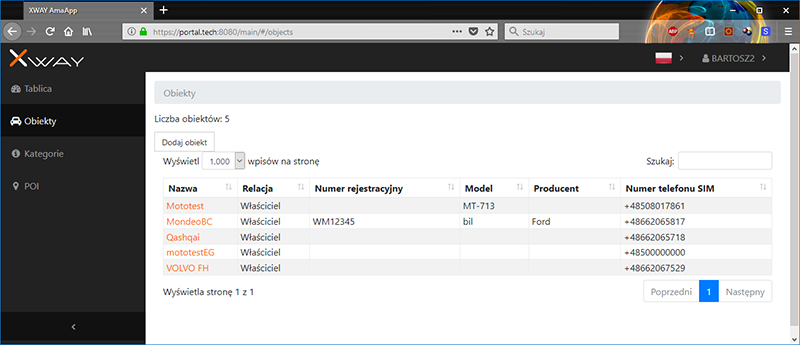
Also, the Report Engine was written completely from the beginning. We designed it specifically for the new structure of the database, including multithreaded work and the possibility of replication in the case of expanding computational resources. The new reports will operate on demand or in schedule mode. Initially, they will only handle time-based orders. In the next stage, we will add support for object events. The selected report will be generated in the case of a real occurrence of the event, e.g. exceeding the speed limit. The completed reports will be stored in the system and sent via e-mail as an attachment. On the Internet platform, we plan to recreate all report templates that are available in the current version. We will introduce numerous changes in the form of presentations on this occasion, but the general idea will remain unchanged. As before, the reports can be downloaded as a .pdf and .csv file to a local computer. We will also add a report archive, where all generated forms will be saved, with the option of returning to viewing and re-reading.
The scheduled report generator will simultaneously work as a notification module. This is new functionality that is not available in the XwayMAP application. Notifications are limited to sending messages to the user with information about the occurrence of a significant event, e.g. opening the cargo space in forbidden place. Notifications will be sent by post and via SMS. The distribution of messages will also be carried out when we are not logged in, and we do not monitor the situation on a regular basis.
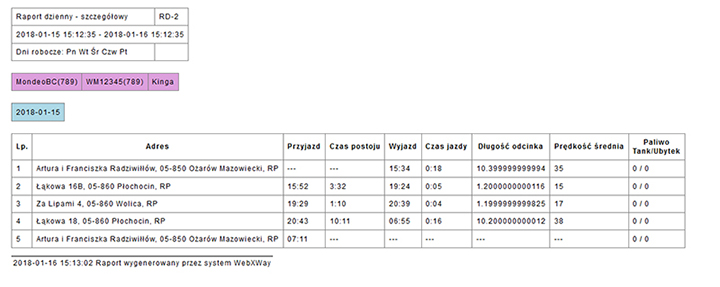
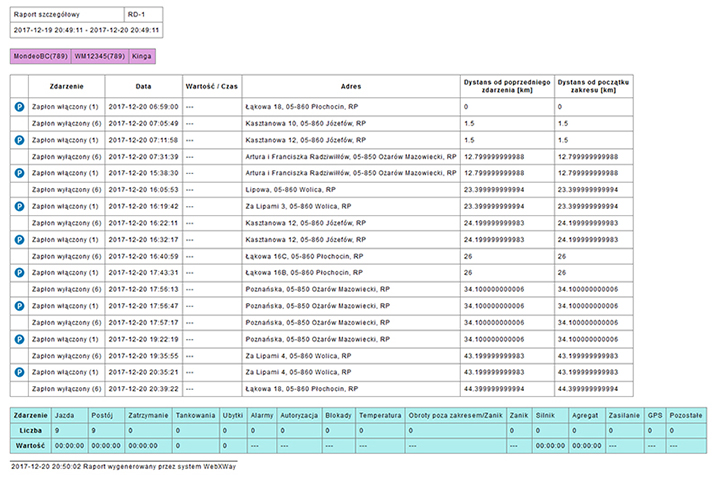
XwaySystem undergoes metamorphosis. Day after day, we are approaching the launch of the new version. The official date is not yet decided. Work is still underway on the implementation of a part of the functionality. Initially, we plan to make the new version available in the fourth quarter of 2018. Then all users of the XwayMap program will be able to log in to the new application directly in their favorite web browser. Soon, we will make the new test interface available to interested users. We invite you to participate in the test program. We are also waiting for comments or suggestions on what functionalities should offer.
When developing the project, we benefited from EU subsidies under the Operation Program OP 2.3.2 Tickets for Innovations for SOHO, project number POIR.02.03.02-14-0014/16-01, “Development and implementation of the GreenWay internet platform with a reading of tachographs and driver cards and a notification module. “







